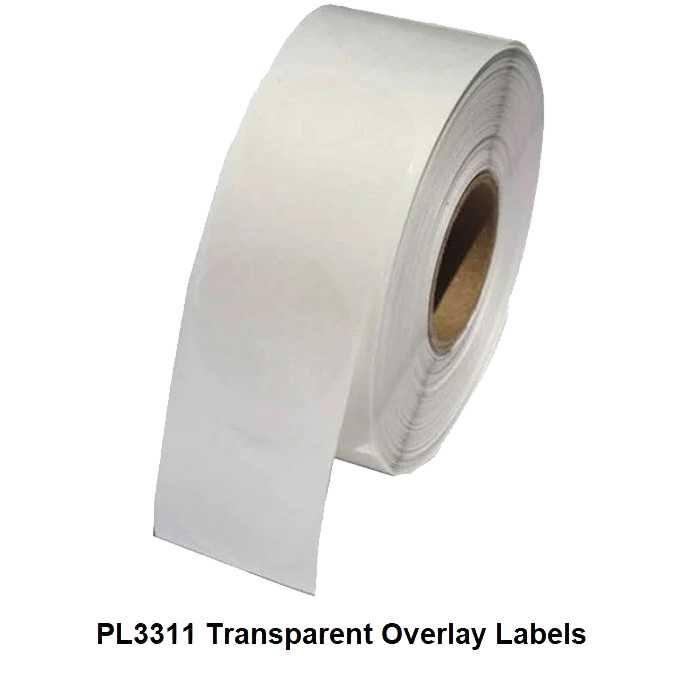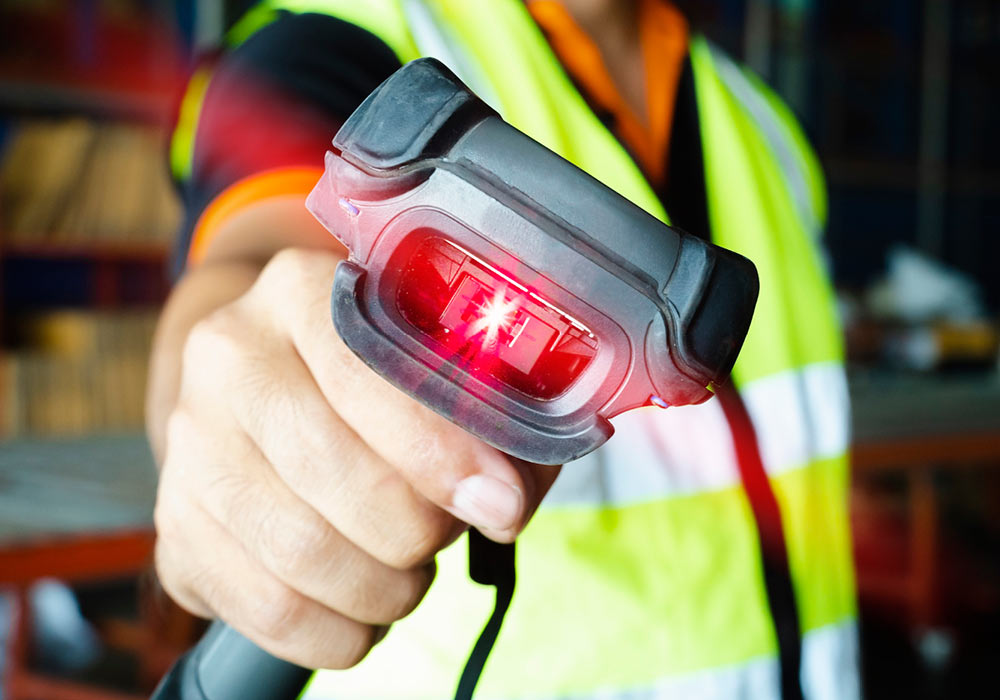Blank labels and Accessories
Special size plain paper labels for general usage
Bookmark default size Spine Labels, blank paper labels and protective overlay labels (bar code protectors).
The following special size labels and bar code protector labels are available to order.
TL55 “Bookmark default size Spine Labels” paper labels 32mm x 28mm, 55 labels per A4 page.
TL44 Blank accessory paper labels 50mm x 25mm, 44 labels per A4 page.
TL64 Blank accessory paper labels 50mm x 17mm, 64 labels per A4 page.
TL90 Blank accessory paper labels 40mm x 15mm, 90 labels per A4 page.
All the above paper based labels are sold in boxes of 100 A4 size sheets.

PL3311 60mm x 30mm transparent self adhesive bar code protective overlay labels are supplied on a roll of 1000 labels within a dispenser box.
Dataman’s TL44’s, TL55’s, TL64’s, and TL90’s can also be used in Microsoft Word Labelling.
Examples of setting up MS Word 97 – 2003 and Word 2007 label parameters.
What you should know about printing bar codes.
You can order by Phone, Fax, or Email
Simply pick up the phone to request the product or service required.
IMPORTANT NOTICE
TL44, TL64 & TL90 “BLANK” plain paper labels are sold as described. ie that is “BLANK” paper labels.
The TL44, TL64 and TL90 labels are “paper based” labels and are intended for medium to short life term (1 – 2 years) usage, they are best suited for printing text only.
Under certain climatic conditions plain paper labels can rapidly deteriorate, therefore Dataman Barcode Systems does not accept any responsibility for the reliability or accuracy of bar codes printed by the user on plain paper labels like TL44’s, TL64’s and TL90’s,
Dataman Barcode Systems also does not recommend or endorse the printing of bar codes using bar code True Type fonts. The entire risk and chance of failure when using ANY plain paper label or True Type font to print their own bar codes must be undertaken and accepted by the user.
COLOURED BAR CODES
We are sometimes called on to resolve bar code problems which turn out to be caused by low contrast bar codes. The human eye is many times more sensitive than the best bar code scanner – what appears to be a good bar code by eye may be barely perceptible by the scanner.
Bar code scanners mainly use an almost monochromatic light source at the red end of the spectrum. Sometimes the light source is in the infra red and invisible to humans.
The best contrast is obtained when the background reflects all the light and the bars reflect none. This is never fully achieved in practice but there must be a significant difference between the bars and background if the code is to be read reliably.
Wherever possible bar codes should be printed in black ink on a white background. This will give the best possible contrast over the widest range of conditions. If the bar code is likely to be scanned with an infra red scanner then the black ink must be chosen carefully, some blacks are transparent to infra red – particularly those based on vegetable dyes (ink jet users take note). A black ink based on a carbon pigment is likely to be suitable. Note that the ribbons of many dot matrix printers use a vegetable dye based ink.
Bar codes printed with such printers are often unreadable with infra red scanners even though the bar codes appear to have excellent contrast to the eye.
Infra red and far red scanners also have difficulty reading bar codes printed on thermal paper. These days most thermally printed bar codes use a ‘thermal transfer’ ribbon. This consists of a carbon black based pigment in a wax matrix. Thermal transfer bar codes usually have excellent contrast with all types of scanner.
If you must use colours stick to the following general rules. Use light coloured substrates towards the red end of the spectrum for the background. For the bars use dark coloured inks towards the blue end of the spectrum. Never rely on a coloured product inside a transparent wrapper to provide either the light background or the dark bar colour. It is possible to print a white or very pale reddish background over a dark substrate which form the bars. However this is not recommended unless absolutely necessary- the problems for your printer will be considerable.

REFRACTION
Bar codes must conform to certain parameters that include accuracy of print and adherence to standards of contrast and reflectivity, if the bar code lacks contrast or is too reflective or is covered by a material that causes too much reflectivity it is the bar code or the whole student card that is at fault and not the bar code reader.
Another problem that causes poor bar code reading performance is when the bar code is covered by an overly thick transparent surface, normal Bar code readers are not designed to function under these conditions. If it is necessary to cover a bar code with a clear protective overlay then the material should be as thin as possible, suitable products are available for this purpose.
The reason that the performance of bar code readers deteriorate when scanning through transparent overlays like plastic or glass is due to the phenomena of light refraction. When light passes from one transparent medium to another it changes speed and bends, in net effect the image of the bar code that is reflected back to the bar code reader is distorted and in some cases no longer of sufficient accuracy.
Please see:- http://interactagram.com/physics/optics/refraction/
If your D-Tech, NEXA or Cipher Labs bar code readers are working fine when used for reading the bar codes on the books etc and are only failing when reading your new student bar code cards then I would have the cards submitted for scrutiny and verification with an organisation that undertakes this.
